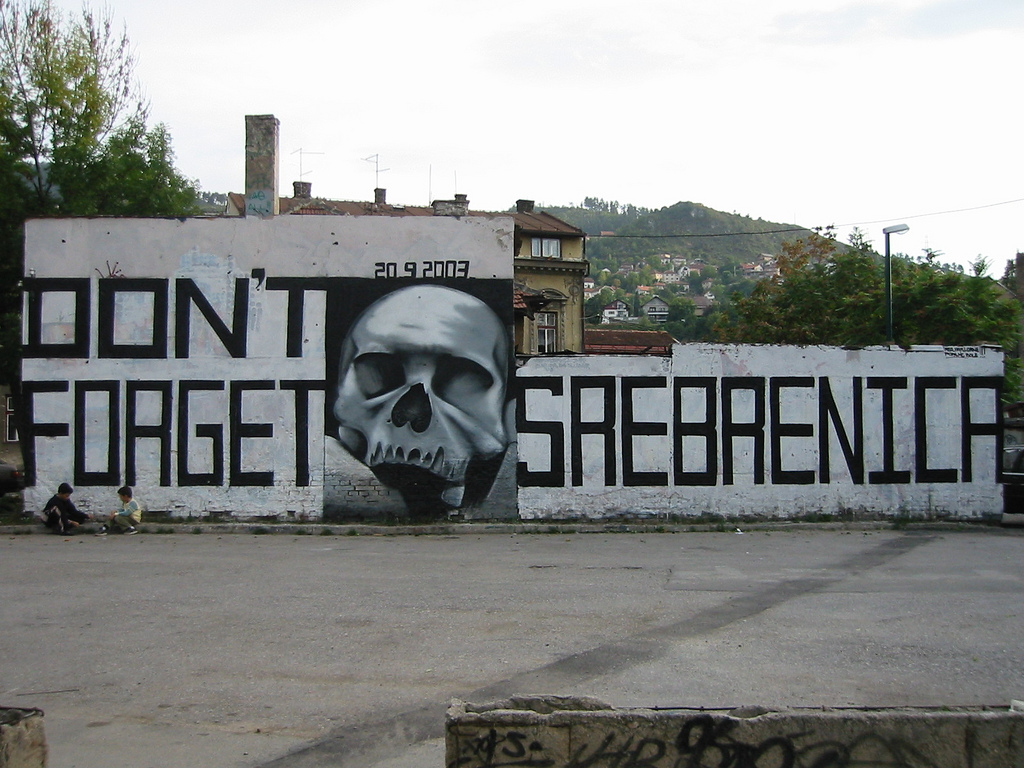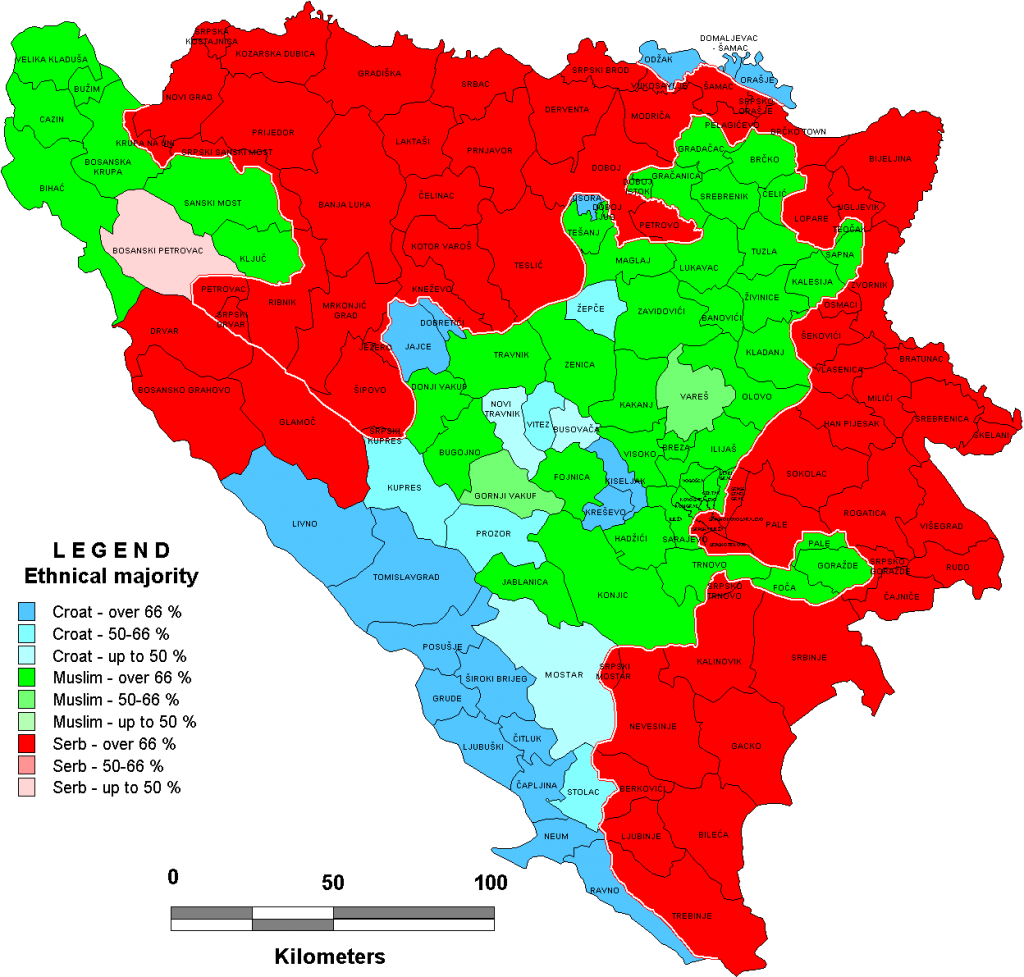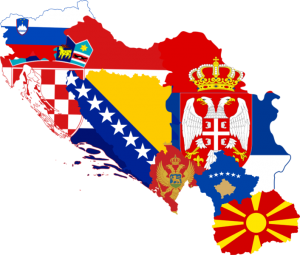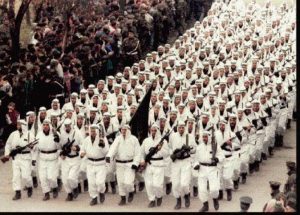
Views: 3156
Global Research Editor’s Note
Ratko Mladić has recently been convicted to life imprisonment by the the ICTY on charges of genocide, war crimes and crimes against humanity while he was Chief Commander of the Army of Republika Srpska between 1992 and 1995 in Bosnia and Herzegovina.
This detailed account first published in 1998 by former UN Military Observer Carlos Martino Branco casts doubts on the decision of the Hague Tribunal (ICTY) that “genocide was committed in Srebrenica in 1995.”
“…Bosnia Serb forces carried out genocide against the Bosnian Muslims (…) .Those who devise and implement genocide seek to deprive humanity of the manifold richness its nationalities, races, ethnicities and religions provide. This is a crime against all humankind, its harm being felt not only by the group targeted for destruction, but by all of humanity.”
This article by General Major Carlos Martino Branco first published by Global Research on 20 April 2004 casts doubt on the ICTY conviction of Ratko Mladić.
Michel Chossudovsky, 23 November 2017
***
Author’s Preface
I was on the ground in Bosnia during the war and, in particular, during the fall of Srebrenica.
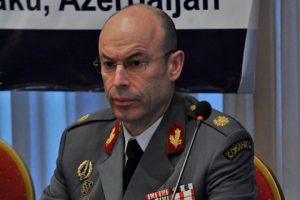 One may agree or disagree with my political analysis, but one really ought to read the account of how Srebrenica fell, who are the victims whose bodies have been found so far, and why the author believes that the Serbs wanted to conquer Srebrenica and make the Bosnian Muslims flee, rather than having any intentions of butchering them. The comparison Srebrenica vs. Krajina, as well as the related media reaction by the “free press” in the West, is also rather instructive.
One may agree or disagree with my political analysis, but one really ought to read the account of how Srebrenica fell, who are the victims whose bodies have been found so far, and why the author believes that the Serbs wanted to conquer Srebrenica and make the Bosnian Muslims flee, rather than having any intentions of butchering them. The comparison Srebrenica vs. Krajina, as well as the related media reaction by the “free press” in the West, is also rather instructive.
There is little doubt that at least 2,000 Bosnian Muslims died in fighting the better trained and better commanded VRS/BSA. Yet, the question remains, WHEN did most of these casualties of combat occur? According to the analysis below, it was before the final fall of Srebrenica: the Muslims offered very little resistance in the summer of 1995.
I was UNMO [United Nations Military Observer] Deputy Chief Operations Officer of the UNPF [United Nations Population Fund] (at theatre level) and my information is based upon debriefings of UN military observers who where posted to Srebrenica during those days as well as several United Nations reports which were not made public.
My sources of information are not Ruder & Finn Global Public Affairs. My name is not included in their database.
I do not wish to discuss numbers and similar matters pertaining thereto. There is reason to believe that figures have been used and manipulated for propaganda purposes. These figures and information do not provide a serious understanding of the Yugoslavian conflict.
The article is based upon TRUE information and includes my analysis of the events. The story is longer than what I have presented here in this article.
It is my hope that it will contribute to clarifying what really happened in Srebrenica.
Was Srebrenica a Hoax?
It is now two years since the Muslim enclave, Srebenica, fell into the hands of the Serbian army in Bosnia. Much has been written about the matter. Nonetheless, the majority of reports have been limited to a broad media exposure of the event, with very little analytic rigor.
Discussion of Srebrenica cannot be limited to genocide and mass graves.
A rigorous analysis of the events must take into consideration the background circumstances, in order to understand the real motives which led to the fall of the enclave.
 The zone of Srebrenica, like almost all of Eastern Bosnia, is characterized by very rugged terrain. Steep valleys with dense forests and deep ravines make it impossible for combat vehicles to pass, and offers a clear advantage to defensive forces. Given the resources available to both parties, and the characteristics of the terrain, it would seem that the Bosnian army (ABiH) had the necessary force to defend itself, if it had used full advantage of the terrain. This, however, did not occur.
The zone of Srebrenica, like almost all of Eastern Bosnia, is characterized by very rugged terrain. Steep valleys with dense forests and deep ravines make it impossible for combat vehicles to pass, and offers a clear advantage to defensive forces. Given the resources available to both parties, and the characteristics of the terrain, it would seem that the Bosnian army (ABiH) had the necessary force to defend itself, if it had used full advantage of the terrain. This, however, did not occur.
Given the military advantage of the defensive forces it is very difficult to explain the absence of military resistance. The Muslim forces did not establish an effective defensive system and did not even try to take advantage of their heavy artillery, under control of the United Nations (UN) forces, at a time in which they had every reason to do so.
The lack of a military response stands in clear contrast to the offensive attitude which characterized the actions of the defensive forces in previous siege situations, which typically launched violent “raids” against the Serbian villages surrounding the enclave, thus provoking heavy casualties amongst the Serbian civilian population.
But in this instance, with the attention of the media focused upon the area, military defence of the enclave would have revealed the true situation in security zones, and demonstrate that these had never been genuinely demilitarized zones as was claimed, but were harboured highly-armed military units. Military resistance would jeopardize the image of “victim”, which had been so carefully constructed, and which the Muslims considered vital to maintain.
Throughout the entire operation, it was clear that there were profound disagreements between the leaders of the enclave. From a military viewpoint, there was total confusion. Oric, the charismatic commander of Srebenica, was absent.
The Sarajevo government did not authorize his return in order to lead the resistance. Military power fell into the hands of his lieutenants, who had a long history of incompatibility. The absence of Oric’s clear leadership led to a situation of total ineptitude. The contradictory orders of his successors completely paralyzed the forces under siege.
The behavior of the political leaders is also interesting. The local SDP president, Zlatko Dukic, in an interview with European Union observers, explained that Srebrenica formed part of a business transaction which involved a logistical support route to Sarajevo, via Vogosca.
He also claimed that the fall of the enclave formed part of an orchestrated campaign to discredit the West and win the support of Islamic countries. This was the reason for Oric to maintain a distance from his troops. This thesis was also defended by the local supporters of the DAS. There were also many rumours of a trade within the local population of the enclave.
Another curious aspect was the absence of a military reaction from the 2nd Corps of the Muslim army, which did nothing to relieve the military pressure on the enclave. It was common knowledge that the Serbian unit in the region, the “Drina Corps”, was exhausted and that the attack on Srebenica was only possible with the aid of the units from other regions. Despite this fact, Sarajevo did not lift a finger in order to launch an attack which would have divided the Serbian forces and exposed the vulnerabilities created by the concentration of resources around Srebenica. Such an attack would have reduced the military pressure on the enclave.
It is also important to register the pathetic appeal of the president of Opstina, Osman Suljic, on July 9, which implored military observers to say to the world that the Serbians were using chemical weapons. The same gentleman later accused the media of transmitting false news items on the resistance of troops in the enclave, requiring a denial from the UN. According to Suljic, the Muslim troops did not respond, and would never respond with heavy artillery fire. Simultaneously, he complained of the lack of food supplies and of the humanitarian situation. Curiously, observers were never allowed to inspect the food reserve deposits. The emphasis given by political leaders on the lack of military response and the absence of food provisions loosely suggests an official policy which began to be discernible.
In mid 1995, the prolongation of the war had dampened public interest. There had been a substantial reduction in the pressure of public opinion in the western democracies. An incident of this importance would nonetheless provide hot news material for the media during several weeks, could awaken public opinion and incite new passions. In this manner it would be possible to kill two birds with one stone: pressure could be laid to bear in order to lift the embargo and simultaneously the occupying countries would find it difficult to withdraw their forces, a hypothesis which had been advanced by leading UN figures such as Akashi and Boutros-Boutros Ghali.
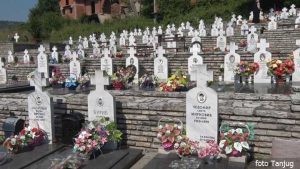 The Muslims always harbored a secret hope that the embargo would be lifted. This had become the prime objective of the Sarajevo government, and had been fuelled by the vote in the US Senate and Congress in favor of such a measure. President Clinton, however, vetoed the decision and required a two thirds majority in both houses. The enclaves collapse gave the decisive push that the campaign needed. After its fall, the US Senate voted with over a two thirds majority in favor of lifting the embargo.
The Muslims always harbored a secret hope that the embargo would be lifted. This had become the prime objective of the Sarajevo government, and had been fuelled by the vote in the US Senate and Congress in favor of such a measure. President Clinton, however, vetoed the decision and required a two thirds majority in both houses. The enclaves collapse gave the decisive push that the campaign needed. After its fall, the US Senate voted with over a two thirds majority in favor of lifting the embargo.
It was clear that sooner or later the enclaves would fall into the hands of the Serbians, it was an inevitability. There was a consensus amongst the negotiators (the US administration, the UN and European governments) that it was impossible to maintain the three Muslim enclaves, and that they should be exchanged for territories in Central Bosnia. Madeleine Albright suggested this exchange on numerous occasions to Izetbegovic, based on the proposals of the Contact Group.
As early as 1993, at the time of the first crisis of the enclave, Karadzic had proposed to Izetbgovic to exchange Srebrenica for the suburb of Vogosca. This exchange included the movement of populations in both directions. This was the purpose of secret negotiations in order to avoid undesirable publicity. This implied that the western countries accepted and encouraged ethnic separation.
The truth is that both the Americans and President Izetbegovic had tacitly agreed that it made no sense to insist in maintaining these isolated enclaves in a divided Bosnia. In 1995 nobody believed any longer in the inevitability of ethnic division of the territory. In the month of June 1995, before the military operation in Srebrenica, Alexander Vershbow, Special Assistant to President Clinton stated that “America should encourage the Bosnians to think in terms of territories with greater territorial coherence and compactness.” In other words this meant that the enclaves should be forgotten. The attack on Srebrenica, with no help from Belgrade, was completely unnecessary and proved to be one of the most significant examples of the political failure of the Serbian leadership.
Meanwhile the western media exacerbated the situation by transforming the enclaves into a powerful mass-media icon; a situation which Izetbegovic was quick to explore. CNN had daily broadcasts of the images of mass graves for thousands of corpses, obtained from spy satellites. Despite the microscopic precision in the localization of these graves, it is certain that no discovery to date has confirmed such suspicions. Since there are no longer restrictions on movement, we inevitably speculate on why they have still not been shown to the world.
If there had been a premeditated plan of genocide, instead of attacking in only one direction, from the south to the north – which left the hypothesis to escape to the north and west, the Serbs would have established a siege in order to ensure that no one escaped. The UN observation posts to the north of the enclave were never disturbed and remained in activity after the end of the military operations. There are obviously mass graves in the outskirts of Srebrenica as in the rest of ex-Yugoslavia where combat has occurred, but there are no grounds for the campaign which was mounted, nor the numbers advanced by CNN.
The mass graves are filled by a limited number of corpses from both sides, the consequence of heated battle and combat and not the result of a premeditated plan of genocide, as occurred against the Serbian populations in Krajina, in the Summer of 1995, when the Croatian army implemented the mass murder of all Serbians found there. In this instance, the media maintained an absolute silence, despite the fact that the genocide occurred over a three month period. The objective of Srebrenica was ethnic cleansing and not genocide, unlike what happened in Krajina, in which although there was no military action, the Croatian army decimated villages.
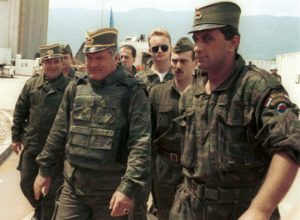 Despite knowledge of the fact that the enclaves were already a lost cause, Sarajevo insisted in drawing political dividends from the fact. The receptivity which had been created in the eyes of public opinion made it easier to sell the thesis of genocide.
Despite knowledge of the fact that the enclaves were already a lost cause, Sarajevo insisted in drawing political dividends from the fact. The receptivity which had been created in the eyes of public opinion made it easier to sell the thesis of genocide.
But of even greater importance than the genocide thesis and the political isolation of the Serbs, was blackmailing of the UN: either the UN joined forces with the Sarajevo government in the conflict (which subsequently happened) or the UN would be completely discredited in the eyes of the public, leading in turn to support for Bosnia. Srebrenica was the last straw which led western governments to reach agreement on the need to cease their neutrality and commence a military action against one side in the conflict. It was the last straw which united the West in their desire to break “Serbian bestiality”. Sarajevo was conscious of the fact that it lacked the military capacity to defeat the Serbs. It was necessary to create conditions via which the international community could do this for them. Srebrenica played a vital role in this process.
Srebrenica represents one of a series of acts by the Serbian leaders intended to provoke the UN, in order to demonstrate their impotence. This was a serious strategic error which would cost them dear. The side which had everything to win by demonstrating the impotence of the UN was the Sarajevo leadership and not that of Pale. In 1995 it was clear that the change in the status quo required a powerful intervention which would overthrow the Serbian military power. Srebrenica was one of the pretexts, resulting from the short-sightedness of the Bosnian Serbian leaders.
The besieged forces could have easily defended the enclave, at least for much longer, if they had been well led. It proved convenient to let the enclave fall in this manner. Since the enclave was doomed to fall, it was preferable to let this happen in the most beneficial manner possible. But this would only have been viable if Sarajevo had political initiative and freedom of movement, which would never occur at the negotiating table. The deliberate fall of the enclave might appear to be an act of terrible machiavellian orchestration, but the truth is that the Sarajevo government had much to gain, as proved to be the case. Srebrenica was not a zero-sum game. The Serbians won a military victory but with highly negative political side-effects, which helped result in their definitive ostracization.
We might add a final curious note. As the UN observation posts were attacked, and proved impossible to maintain, the forces withdrew. The barricades set up by the Muslim army did not let the troops past. These troops were not treated as soldiers fleeing from the front line, but rather with a sordid differentiation.
The Muslims not only refused to fight to defend themselves, they forced others to fight on their behalf. In one instance, the commander of a Dutch vehicle decided after conversations with ABiH to pass the barrier. A Muslim soldier threw a hand grenade whose fragments mortally wounded him. The only UN soldier to die in the Srebrenica offensive, was killed by the Muslims.
Originally published on 2017-11-23
About the author: General Major Carlos Martins Branco is a high-ranking officer of Portugal’s Armed Forces, who served as a UN Military Observer in Bosnia in 1995.
Source: Global Research
Origins of images: Facebook, Twitter, Wikimedia, Wikipedia, Flickr, Google, Imageinjection, Public Domain & Pinterest.
Read our Disclaimer/Legal Statement!
Donate to Support Us
We would like to ask you to consider a small donation to help our team keep working. We accept no advertising and rely only on you, our readers, to keep us digging the truth on history, global politics and international relations.
[wpedon id=”4696″ align=”left”]
FOLLOW US ON OUR SOCIAL PLATFORMS

